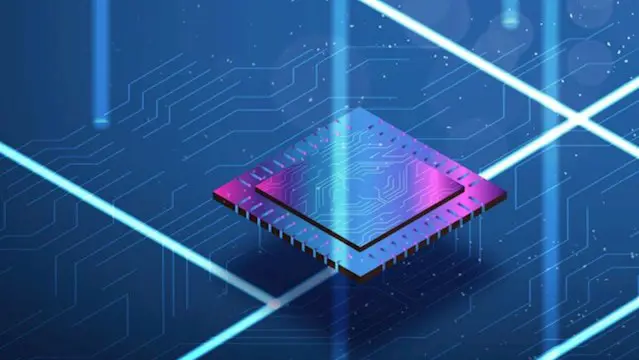
Assembly Language using ATMEL AVR Microcontroller
Self-paced videos, Lifetime access, Study material, Certification prep, Technical support, Course Completion Certificate
Uplatz
Summary
- Reed courses certificate of completion - Free
- Uplatz Certificate of Completion - Free
Add to basket or enquire
Overview
Uplatz provides this in-depth course on Assembly Language using ATMEL AVR Microcontroller. It is a self-paced course consisting of video lectures. You will be awarded Course Completion Certificate at the end of the course.
An AVR microcontroller is a type of device manufactured by Atmel, which has particular benefits over other common chips, but first what is a microcontroller?
The easiest way of thinking about it is to compare a microcontroller with your PC, which has a motherboard in it. On that motherboard is a microprocessor (Intel, AMD chips) that provides the intelligence, RAM and EEPROM memories and interfaces to rest of system, like serial ports (mostly USB ports now), disk drives and display interfaces.
A microcontroller has all or most of these features built-in to a single chip, so it doesn’t need a motherboard and many components, LEDs for example, can be connected directly to the AVR. If you tried this with a microprocessor, bang!
PC microprocessors are always at least 32-bit and commonly now 64-bit. This means that they can process data in 32-bit or 64-bit chunks as they are connected to data buses this wide. The AVR is much simpler and deals with data in 8-bit chunks as its data bus is 8-bit wide, although there is now an AVR32 with 32-bit bus and an ATxmega family with a 16-bit data bus.
A PC has an operating system (Windows or Linux) and this runs programs, such as Word or Internet Explorer or Chrome that do specific things. An 8-bit microcontroller like the AVR doesn’t usually have an operating system, although it could run a simple one if required, and instead it just runs a single program.
Just as your PC would be useless if you didn’t install any programs, an AVR must have a program installed to be any use. This program is stored in memory built-in to the AVR, not on an external disk drive like a PC. Loading this program into the AVR is done with an AVR programmer, usually when the AVR is in a circuit or system, hence AVR ISP or AVR In System Programmer.
AVR microntrollers come in different packages,some designed for through-hole mounting and some surface mount. AVRs are available with 8-pins to 100-pins, although anything 64-pin or over is surface mount only. Most people start with a DIL (Dual In Line) 28-pin chip like the ATmega328 or the 40-pin ATmega16 or ATmega32.
Microcontroller is the advanced version of microprocessors. It contain on chip central processing unit (CPU), Read only memory (ROM), Random access memory (RAM), input/output unit, interrupts controller etc.
Therefore a microcontroller is used for high speed signal processing operation inside an embedded system. It acts as major component used in designing of an embedded system.
AVR microcontroller is an electronic chip manufactured by Atmel, which has several advantages over other types of microcontroller.
We can understand microcontroller by comparing it with Personal Computer (PC), which has a motherboard inside it. In that motherboard a microprocessor (AMD, Intel chips) is used that provides the intelligence, EEPROM and RAM memories for interfacing to the system like serial ports, display interfaces and disk drivers. A microcontroller has all or most of these features built into a single chip, therefore it doesn?t require a motherboard and any other components.
Curriculum
Course media
Description
AVR microcontroller comes in different configuration, some designed using surface mounting and some designed using hole mounting. It is available with 8-pins to 100-pins, any microcontroller with 64-pin or over is surface mount only.
Some mostly used AVR microcontrollers are:-
- ATmega8 microcontroller
- ATmega16 microcontroller
- ATmega32 microcontroller
- ATmega328 microcontroller
Atmel Microcontroller Programming – A microcontroller is actually a small and typically inexpensive computer. And you can use it one to perform necessary calculations and conclusions in the uncomplicated hardware framework. Such as, the LED panels generally present in subways can easily implement utilizing a microcontroller, including the type of Atmel.
In this instance, the microcontroller is going to do two tasks following it must have to approach a central computer through some sort of common link, wired or wireless, to obtain improvements on schedules. As well as, usually deal with the scanning of the LED matrix, that is a dull but computationally not outstanding job, and very quickly inside the forces of a modern and trendy microcontroller.
In general, AVR is a category of microcontrollers created by Atmel starting in 1996. AVR is one of the first microcontroller groups to work with on-chip flash memory for program storage. And also, instead of one-time programmable ROM, EPROM, or EEPROM through some other microcontrollers during the time.
To point out, the Arduino physical computing program is depending on an ATmega328 microcontroller. The Arduino mega platform is developing by using with the help of ATmega1280 and ATmega2560. Basically, Arduino boards are using with its language and IDE, or else with additional standard programming settings as like C, assembler and more.
Basic Assessment of Microcontroller
In the first, AVR microcontroller is enormously created alternative mini-computer. And built throughout the tiny processor with a chip, memory as well as extra padding input/output peripheral equipment. The most significant goal of AVR microcontroller is obviously to supply an electronic digital controller of just about any kind of platform.
Apart from primary input and output functions, microcontrollers also provide conveniences like communication access, measurements, and entry to converting info. It is exactly unquestionably the periods of a computer, where almost most people depend on it just for a reason or another. Nevertheless, one more achievement that is fast emerging as a classy one is the embedded system. It is finding devote plenty of electronic and digital products in the current superior period. In this days, an embedded system is playing an important role. To explain the names of appliances and merchandise will probably run out of space.
Types of AVR Microcontroller
ATMEL AVR is using in several automotive applications, for example, basic safety, essential safety, and powertrain and also entertainment systems. Recently Atmel Automotive Compilation has launched by ATMEL to aid program developers with automotive applications.
Nowadays, various organizations are developing many AVR-based microcontroller boards just for use by robot designers, experimenters, and tiny system developers. Also, there is a vast community of Arduino-compatible boards assisting the same users.
- Traditional AV-R (AT90SXXXX)
- Tiny AVR (ATtinyXXXX)
- Mega AVR (ATmegaXXXX)
- Xmega AVR (ATXmegaXXXX)
- Application-specific AVR
- 32bit AVR
Also, a high number of digital appliances and gadgets in a position outside there are many apparatus available. And likewise, RTOS RT is additionally a specific thing for this contemporary world. Extensively, AVR microcontroller programming is going to be your primary on-chip flash memory that goes into 8-bit, 16-bit, 32-bit integral processor chips.
Application of Microcontroller
Atmel microcontroller programming is cheap and really tiny in size. Hence anyone can embed on a various device. Basically, microcontroller programming is very easy and simple to learn. And also, it is not much difficult.
- Mobile Phones
- Auto Mobiles
- CD/DVD Players
- Washing Machines
- Cameras
- Modems and Keyboard Controllers
- Security Alarms
- Electronic Measurement Instruments
- Microwave Oven
A microcontroller is the essential attributes of an electronic device that are in the process of rapid changes with the verse of your time and new advents. The programmers make up the first step toward this system that rendering it a brilliant device. And also, socket programming is advanced course in embedded system. The microcontroller is also performing as an embedded system with peripheral devices, storage as well as a central processor. Today, most of the programmable microcontroller is in use for various applications. And finally, enrol with Electronics Engineering Technician program and expand your technical knowledge of wireless communications, microcontrollers and industrial systems.
Who is this course for?
Everyone
Requirements
Passion & determination to learn and succeed!
Career path
- Microcontroller Programmer
- Embedded Engineer
Questions and answers
Currently there are no Q&As for this course. Be the first to ask a question.
Certificates
Reed courses certificate of completion
Digital certificate - Included
Will be downloadable when all lectures have been completed
Uplatz Certificate of Completion
Digital certificate - Included
Course Completion Certificate by Uplatz
Reviews
Currently there are no reviews for this course. Be the first to leave a review.
Legal information
This course is advertised on reed.co.uk by the Course Provider, whose terms and conditions apply. Purchases are made directly from the Course Provider, and as such, content and materials are supplied by the Course Provider directly. Reed is acting as agent and not reseller in relation to this course. Reed's only responsibility is to facilitate your payment for the course. It is your responsibility to review and agree to the Course Provider's terms and conditions and satisfy yourself as to the suitability of the course you intend to purchase. Reed will not have any responsibility for the content of the course and/or associated materials.


